Think about every performance review meeting you’ve witnessed and dated comments, vague feedback, and a sense that judgments aren’t based purely on merit. Bias lurking in performance reviews isn’t just unfair; it’s a significant threat to employee trust, engagement, and overall performance.
Recent research shows that biased feedback deeply damages retention and DEI efforts. For example, Textio’s 2024 review of thousands of performance evaluations found that women were coached less on performance and more on personality, with terms like “abrasive” or “emotional” appearing disproportionately. That kind of feedback isn’t just demotivating; it is also a driver of turnover and inequality.
Performance reviews are meant to fuel growth, not erode credibility. Fair, transparent, and structured evaluations should motivate employees and ensure organizations retain their best talent. Unfortunately, bias, whether hidden or overt, undercuts that goal by distorting outcomes and undermining trust.
Key Takeaways
- The Hidden Threat of Bias: Biased reviews weaken trust, lower engagement, and drive talent away.
- Types of Review Bias: Recency, halo effect, and other hidden patterns distort fairness.
- Root Causes of Unfair Reviews: Inconsistent criteria and lack of visibility fuel subjectivity.
- The Business Impact: Biased reviews increase turnover costs and stall DEI progress.
- Reducing Bias in Reviews: Use evidence-based feedback, calibration, and 360 input.
- Building Fair Evaluations: Structured reviews create consistency and long-term trust.
What Performance Review Bias Looks Like
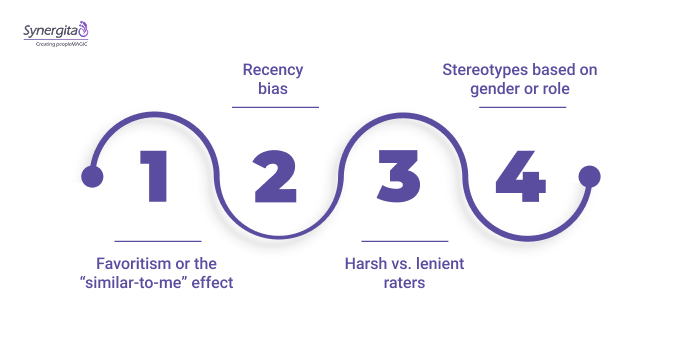
Bias in reviews can be both conscious and unconscious. Sometimes it’s an intentional preference toward certain employees, but more often it shows up in subtle ways that managers don’t even recognize. These hidden patterns can influence ratings, feedback, and even career opportunities.
Employees often encounter:
- Favoritism or the “similar-to-me” effect: Managers unconsciously rate people higher if they share backgrounds, interests, or work styles.
- Recency bias: Performance over the last few weeks gets more weight than contributions made earlier in the review period.
- Harsh vs. lenient raters: Some managers consistently grade tougher, while others are overly generous, creating unfair inconsistencies across teams.
- Stereotypes based on gender or role: Employees may be judged against outdated expectations, like women being described as less “decisive” or support roles being undervalued compared to customer-facing ones.
The challenge is that many of these biases feel like “gut instinct” to managers. Without structured checks in place, they slip through the cracks, leaving employees with reviews that feel subjective rather than earned.
Common Types of Performance Review Bias
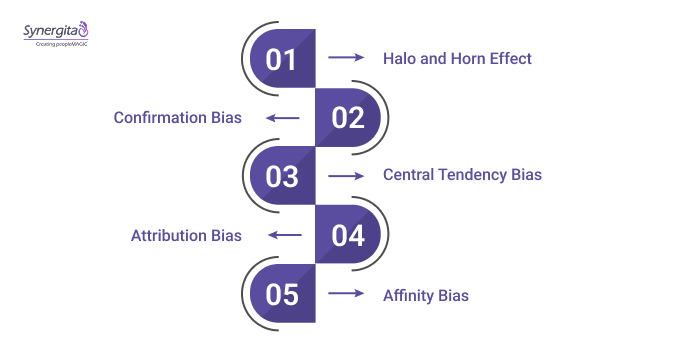
Bias in reviews does not always present itself in obvious ways. It often sneaks in through patterns of judgment or shortcuts managers take when evaluating employees. Understanding these patterns is the first step toward creating fairer and more accurate evaluations.
Halo and Horn Effect
A single standout trait can skew an entire evaluation. If an employee excels in one area, the “halo” effect can make managers rate them highly across unrelated skills. Conversely, a mistake or weakness can have a “horn” effect, unfairly dragging down the rest of the review.
Confirmation Bias
Once a manager forms an impression about an employee, they tend to notice only the evidence that supports that belief. This reinforces preconceived judgments and makes it harder for employees to break free from labels like “high performer” or “not leadership material.”
Central Tendency Bias
Some managers avoid extremes and rate everyone as “average.” While it may feel safe, this bias masks fundamental differences in performance, making it impossible to distinguish top talent or identify employees who need support.
Attribution Bias
Managers often explain successes or failures differently depending on the employee. For example, a favored employee’s win may be credited to skill, while another’s similar success is written off as luck. Over time, this creates uneven career growth opportunities.
Affinity Bias
While favoritism was touched on earlier, affinity bias specifically refers to an unconscious preference for people who share similar backgrounds, experiences, or even personality traits. It can narrow who gets recognized for potential and who gets overlooked.
What Causes Bias in Performance Evaluations
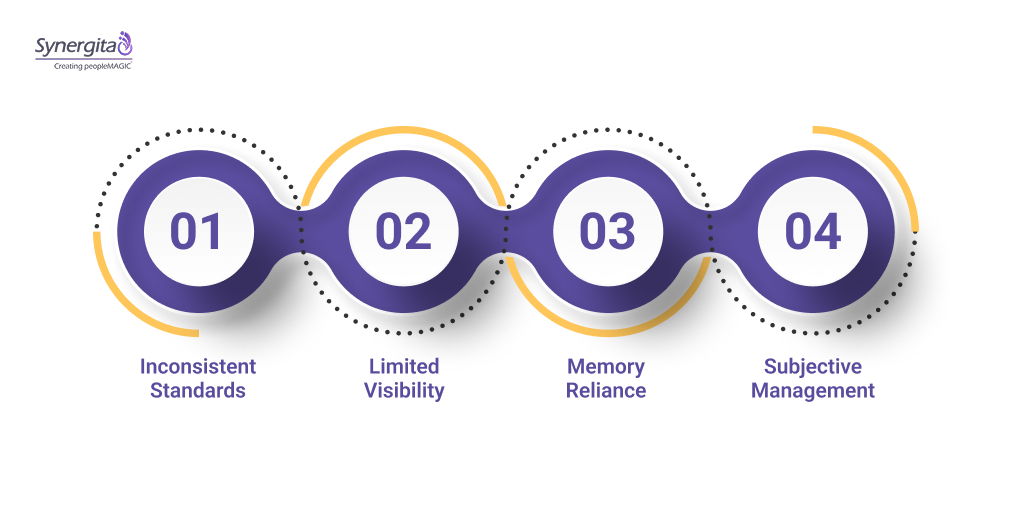
Bias in reviews doesn’t just happen; it is often baked into how organizations structure evaluation processes. Even well-intentioned managers fall into these traps when guardrails are missing.
Inconsistent Criteria Across Functions
When different departments define success in their own ways, evaluations become subjective. A salesperson and an engineer may both excel in their respective roles, but if success is framed differently, one may be rewarded while the other is undervalued.
Limited Visibility Into Cross-Functional Work
Much of today’s work happens across teams, but managers usually see only direct output. Collaborative contributions get missed, leaving some employees undervalued even when their impact is critical to business results.
Reliance on Memory Instead of Ongoing Feedback
Managers often lean on what they recall from recent months rather than reviewing the full year. This recency-driven approach unfairly advantages short-term wins over consistent long-term performance.
Untrained Managers Defaulting to Subjectivity
Most managers have never been trained on structured evaluation techniques. Without awareness of bias or a framework to follow, reviews end up reflecting personal style more than objective performance.
The Business Impact of Biased Performance Appraisals
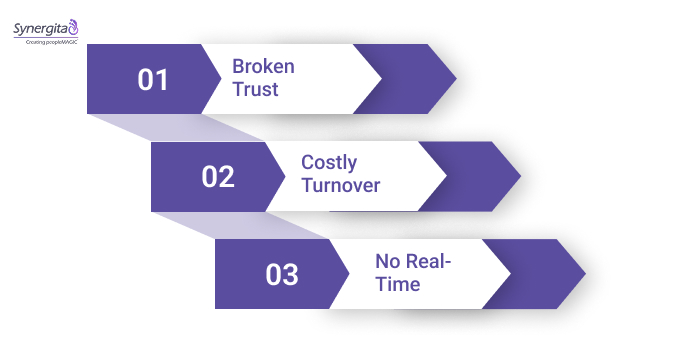
When these root issues go unaddressed, the impact ripples across the organization. Biased evaluations don’t just frustrate employees; they undermine trust, retention, and growth.
Eroded Trust and Disengagement
Fairness is the top factor employees value, yet fewer than one in three believe reviews are equitable. That gap damages trust, leaving employees disengaged and skeptical of leadership decisions.
Turnover That Hits the Bottom Line
Unfair evaluations are a leading cause of attrition. And replacing one employee costs 30% to 200% of their salary when recruitment, training, and productivity losses are factored in. This makes biased reviews one of the most expensive hidden drains on budgets.
Stalled Development and DEI Progress
When reviews are skewed, high-potential talent is overlooked, especially from underrepresented groups. A 2024 study showed that organizations analyzing ratings for group bias were far more likely to build diverse leadership teams. Without this visibility, growth and equity initiatives stall before they start.
How to Identify and Reduce Bias in Performance Reviews
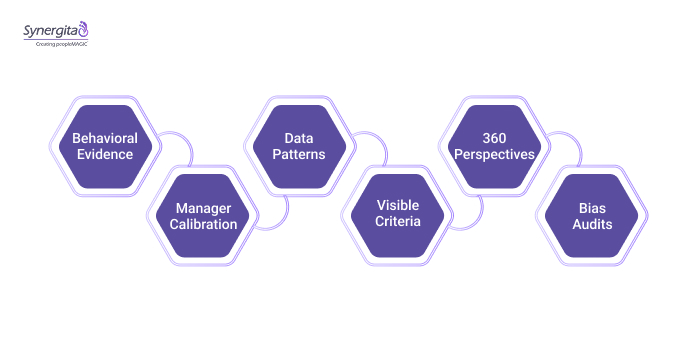
Spotting bias isn’t easy because much of it is unconscious. The key is to move away from gut-based evaluations and instead introduce processes that make reviews more consistent, evidence-driven, and transparent.
Use behavioral evidence, not impressions
Managers should be required to document feedback with concrete examples of work outcomes. Comments like “good team player” are vague, but noting that an employee “mentored three new hires and reduced their onboarding time by 20%” anchors feedback in observable results. A practical method is the STAR framework: Situation, Task, Action, Result. This helps managers provide feedback that is evidence-driven, leaving less room for bias and more clarity for employees.
Normalize calibration across managers
Bias often goes unnoticed because each manager operates in a silo. Regular calibration sessions where leaders compare and align ratings help expose patterns, such as one manager consistently scoring lower or certain groups receiving limited recognition.
Use data analytics to surface patterns
Aggregate review data can reveal systemic issues managers might miss. For instance, if women are consistently rated lower on leadership potential or employees from certain functions receive less developmental feedback, analytics can flag it before it impacts promotions or retention.
Make goals and evaluation criteria visible upfront
Employees should know exactly what success looks like before the review cycle begins. When expectations are set in measurable terms, there’s less room for subjective judgments creeping in at the end. One effective way to achieve this is by framing expectations as SMART goals: Specific, Measurable, Achievable, Relevant, and Time-bound. This ensures every employee knows exactly what success looks like, reducing space for subjective interpretations.
Introduce 360-degree perspectives
Relying solely on one manager’s viewpoint increases the weight of bias. Bringing in peer, upward, and cross-functional feedback creates a more balanced picture and ensures that hidden contributions don’t get overlooked.
Audit reviews for language bias
Subtle wording differences can carry significant consequences. Words like “aggressive” vs. “assertive” or “helpful” vs. “strategic” often split along gender lines. Auditing review text for these patterns helps organizations correct bias before it embeds in decisions about promotions or compensation.
How Synergita Supports Fair and Unbiased Performance Reviews
Synergita’s performance management platform is built to keep evaluations consistent, evidence-based, and transparent throughout the year. Its tools are designed to limit the influence of memory gaps, personal preferences, and inconsistent rating standards.
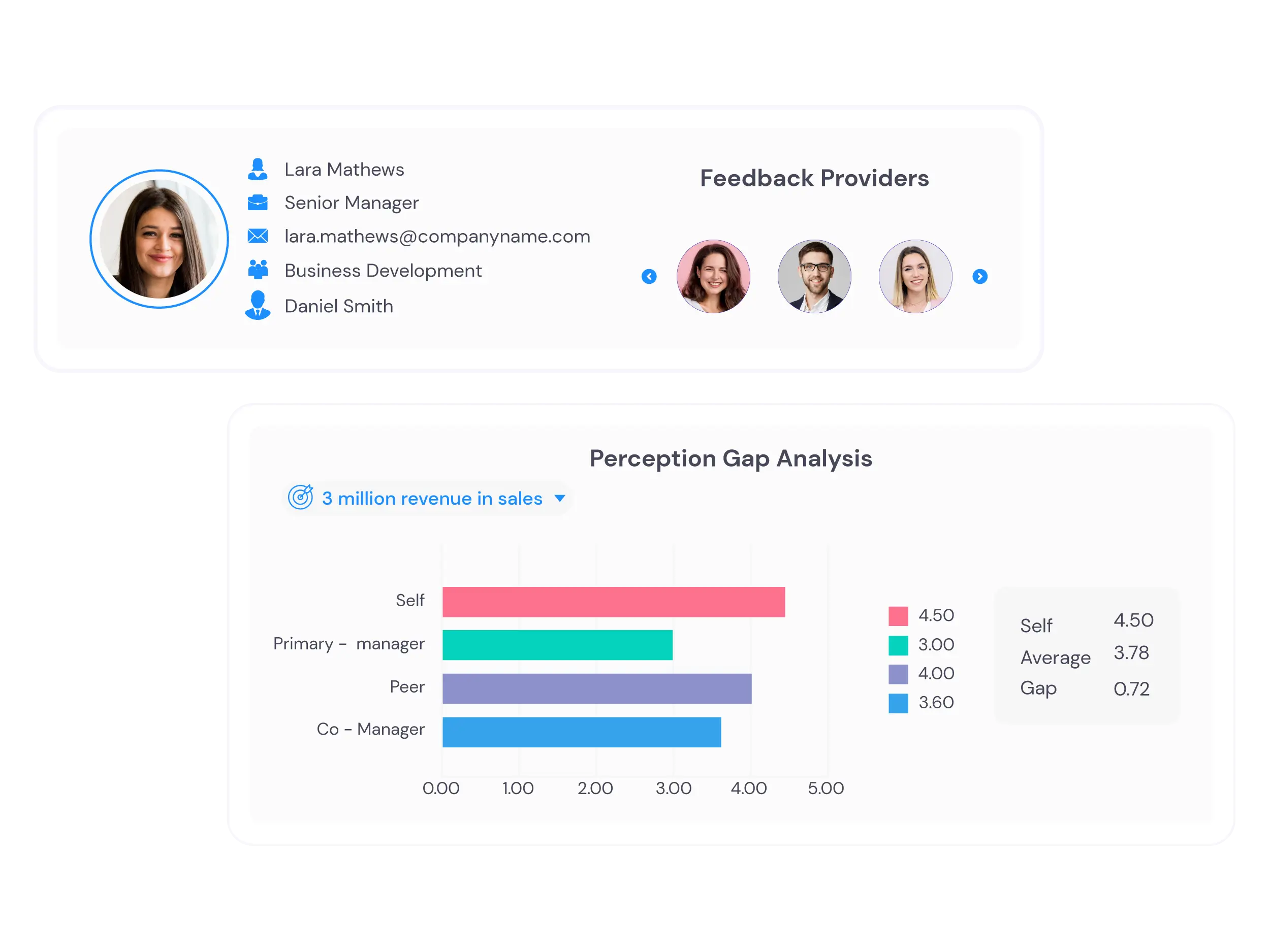
Cascading Goals for Alignment
Synergita helps leaders translate business strategy into measurable goals that cascade down to teams and individuals. This ensures evaluations are based on clear expectations rather than subjective judgment.
Continuous Feedback and Check-Ins
Instead of relying on year-end memory, Synergita captures performance insights through ongoing feedback and regular check-ins. This reduces recency bias and highlights consistent contributions throughout the year.
360-Degree Perspectives
Performance reviews in Synergita include feedback from peers, direct reports, and cross-functional collaborators. This broad perspective balances out single-manager bias and surfaces contributions that might otherwise go unnoticed.
Recognition Across Teams
With Synergita, recognition is not limited to direct managers. Employees can be acknowledged by colleagues across departments, making invisible cross-functional contributions visible and valued.
Analytics That Flag Bias
Synergita’s analytics identify rating trends, highlight inconsistencies, and flag potential bias before it affects promotions or compensation decisions. Leaders gain the data they need to ensure fairness across reviews.
Shared Accountability for Outcomes
By tying goals and outcomes to collective results, Synergita shifts reviews away from isolated judgments. Success is measured by team and organizational impact, embedding fairness into the system.
Discover how Synergita can transform your performance reviews into a fair, motivating, and bias-free process. Start your free trial today.
Conclusion
Fair performance reviews are not built on memory or opinion, they are built on proof. The right system ensures every achievement is visible, every rating is consistent, and every decision is defensible. Synergita makes this possible with continuous tracking, bias detection, and calibration tools that work all year round.
See it for yourself. Book a demo to experience how bias-free reviews can become your company’s norm.
FAQs
Q: How to take the bias out of performance reviews?
A: The key is to move from opinion-based evaluations to evidence-based reviews. Using clear goals, behavioral examples, and structured feedback reduces subjectivity and ensures employees are assessed on outcomes rather than impressions.
Q: What is the most effective way to overcome bias?
A: Combining manager evaluations with peer, upward, and cross-functional feedback provides a fuller picture of performance. Calibration sessions across managers also help expose rating inconsistencies and align standards.
Q: How to control performance bias?
A: Bias can be reduced by making criteria transparent upfront and ensuring regular check-ins instead of relying on annual memory-based reviews. Analytics can further surface systemic patterns like harsher ratings for certain groups.
Q: How can performance rating scales be improved to prevent bias?
A: Rating scales should have clear behavioral definitions for each level instead of vague terms like “meets expectations.” This ensures consistency across managers and minimizes interpretation gaps that can lead to bias.


